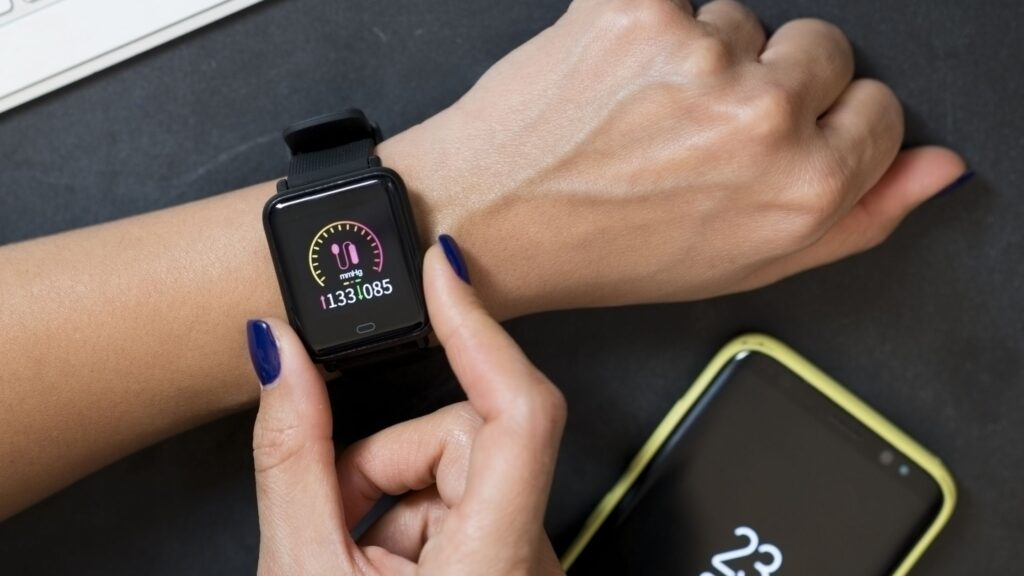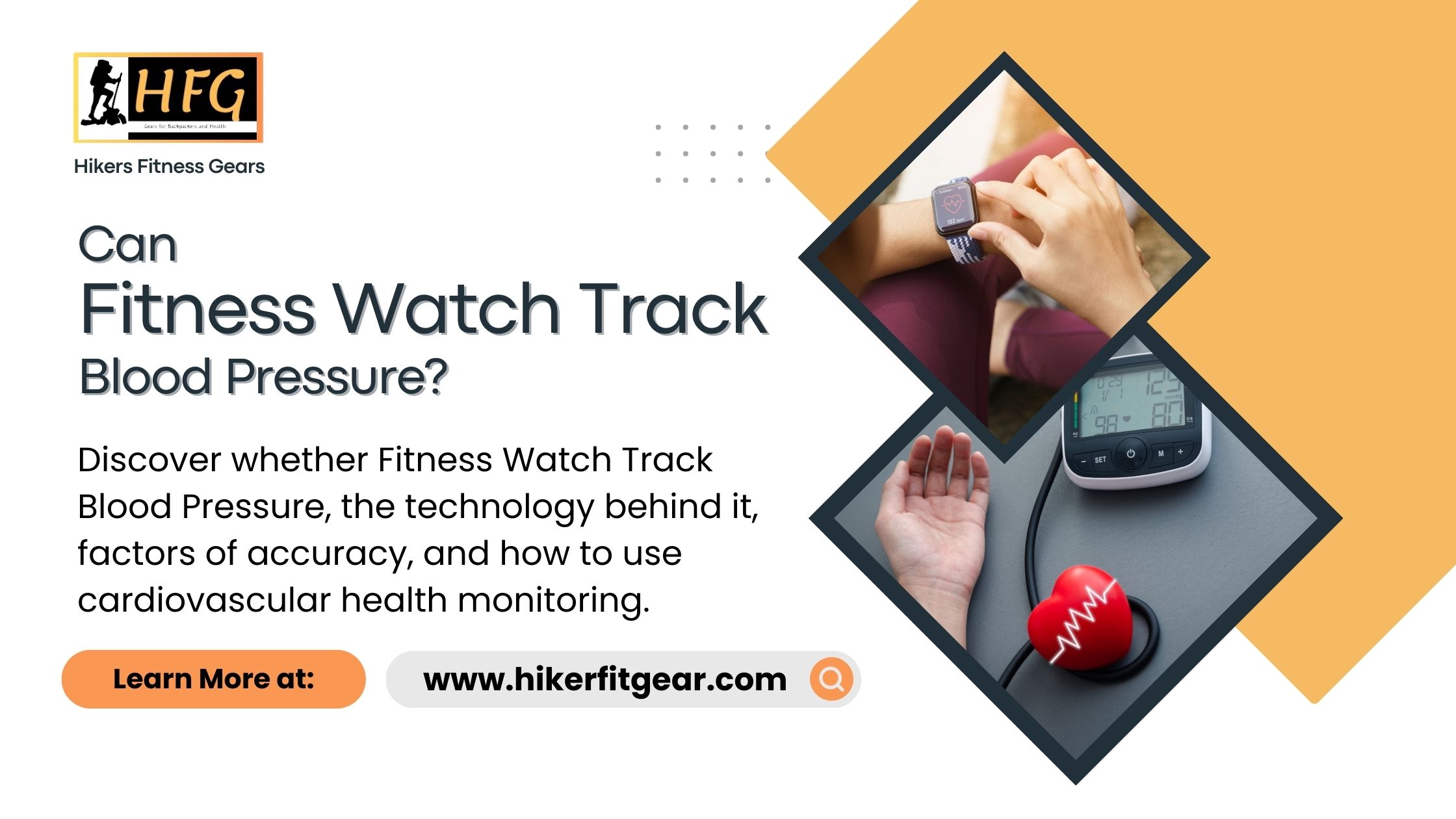Can Fitness Watch Track Blood Pressure?
Introduction
As wearable technology evolves, promising to deliver more comprehensive health monitoring features, the question “Can Fitness Watch Track Blood Pressure?” becomes increasingly relevant. With the rising popularity of fitness watches, many users are curious about their capabilities beyond basic step counting and heart rate monitoring. In this article, we will explore whether fitness watches can accurately track blood pressure, the technology behind it, its benefits, and any potential limitations.
Table of Contents
What This Post Covers
In this comprehensive guide, we will cover:
- The technology used by Fitness Watch Track Blood Pressure.
- How fitness watches track blood pressure.
- The accuracy and reliability of these measurements.
- Comparisons with traditional blood pressure monitors.
- Practical tips for using fitness watches for blood pressure tracking.
- Common concerns and troubleshooting.

What is Fitness Watch Track Blood Pressure?
Fitness Watch Track Blood Pressure refers to the ability of these devices to measure and monitor the pressure of blood within the arteries as it circulates through the body. Blood pressure readings typically include systolic pressure (the pressure during heartbeats) and diastolic pressure (the pressure between heartbeats). Accurate blood pressure monitoring is crucial for managing and preventing various cardiovascular conditions.
How Do Fitness Watches Measure Blood Pressure?
The Role of Sensors and Technology
Fitness watches that claim to measure blood pressure generally use optical sensors and sophisticated algorithms to estimate blood pressure. Here’s how they work:
- Optical Sensors (PPG): Photoplethysmography (PPG) sensors emit light into the skin and measure changes in light absorption, which correspond to blood volume changes in the microvascular tissue. This data is used to estimate heart rate and, by extension, blood pressure.
- Pulse Transit Time (PTT): Some advanced Fitness Watch Track Blood Pressure uses a method based on Pulse Transit Time, which is the time it takes for a pulse wave to travel between two arterial sites. This method involves using both PPG and ECG (electrocardiography) sensors.
Algorithm and Calibration
The raw data from these sensors are processed using algorithms that estimate blood pressure. The accuracy of these estimations can be improved through initial calibration with a traditional blood pressure monitor. Regular calibration can help the watch learn the user’s specific blood pressure patterns, enhancing the accuracy of subsequent readings.
Factors Influencing Accuracy
Individual Variations
Individual variations such as skin tone, wrist size, and the position of the watch can impact the accuracy of blood pressure measurements. Fitness watches use generalized algorithms, which may not account for unique individual differences.
Calibration and Usage
Proper calibration is crucial for accuracy. Initially calibrating the Fitness Watch Track Blood Pressure cuff can significantly improve the reliability of its readings. Consistent usage and ensuring the watch is worn correctly also play vital roles in maintaining accuracy.
Technology Limitations
Current technology in fitness watches may not yet match the accuracy of medical-grade blood pressure monitors. Factors such as movement, ambient light, and sensor quality can influence readings.
Benefits of Fitness Watch Track Blood Pressure
Continuous Monitoring
One of the significant benefits of using Fitness Watch Track Blood Pressure is the ability to monitor blood pressure continuously throughout the day. This can provide valuable insights into how various activities and stress levels impact blood pressure.
Convenience and Accessibility
Fitness watches offer a convenient and accessible way to monitor blood pressure, especially for individuals who need to keep a regular check on their cardiovascular health but find traditional cuffs cumbersome.
Early Detection
Regular monitoring can help in the early detection of abnormal blood pressure trends, prompting timely medical intervention and potentially preventing more severe health issues.
Comparisons with Traditional Blood Pressure Monitors
Accuracy
Traditional blood pressure monitors, especially those used in clinical settings, are generally more accurate than Fitness Watch Track Blood Pressure. They use the oscillometric method or auscultation, which are proven to provide reliable readings.
Usability
While traditional monitors require manual operation and can be bulky, fitness watches offer ease of use with their compact and wearable form factor. This makes fitness watches more suitable for frequent, on-the-go monitoring.
Data Integration
Fitness Watch Track Blood Pressure often integrate with apps and other health monitoring platforms, allowing users to track trends and share data with healthcare providers easily. This level of data integration is less common with traditional monitors.
Can Fitness Watch Track Blood Pressure?
Yes, fitness watches can estimate blood pressure using optical sensors and algorithms that analyze blood volume changes and pulse transit time. These devices provide a convenient way to monitor blood pressure regularly, although their accuracy can be influenced by factors such as individual variations, calibration, and sensor quality. While they offer the benefit of continuous monitoring, they may not yet match the precision of traditional medical-grade blood pressure monitors, making it important to use them as supplementary tools alongside standard methods.
Practical Tips for Using Fitness Watches for Blood Pressure Tracking
Regular Calibration
To improve accuracy, regularly calibrate your fitness watch with a traditional blood pressure monitor. Follow the manufacturer’s guidelines for calibration to ensure the best results.
Consistent Wear
Wear the watch consistently and ensure it fits snugly on your wrist. A loose fit can result in inaccurate readings due to poor sensor contact with the skin.
Monitor Trends
Rather than focusing on individual readings, pay attention to overall trends in your blood pressure data. This can provide a more accurate picture of your cardiovascular health.
Use in Conjunction with Traditional Methods
For critical health decisions, use fitness watch readings in conjunction with traditional blood pressure monitors. This combined approach can provide a more comprehensive view of your blood pressure.

Common Concerns and Troubleshooting
Inaccurate Readings
If you experience inaccurate readings, check the fit of your watch and ensure it is worn correctly. Recalibrate the device as recommended by the manufacturer. If issues persist, consult customer support or your healthcare provider.
Device Limitations
Be aware of the limitations of your fitness watch. While they offer valuable insights, they are not a replacement for professional medical devices or advice. Use them as a supplementary tool for monitoring your health.
Environmental Factors
Consider environmental factors that might affect readings, such as ambient light and temperature. Try to take readings in consistent conditions to improve accuracy.
Conclusion
So, can fitness watch track blood pressure? While they can estimate blood pressure using advanced sensors and algorithms, their accuracy may not yet match that of traditional medical devices. However, fitness watches offer the benefits of continuous, convenient monitoring and can be valuable tools for keeping an eye on your cardiovascular health. By understanding their limitations and following best practices for use, you can make the most of your fitness watch’s blood pressure tracking capabilities.
Frequently Asked Questions
1. How accurate are fitness watches at measuring blood pressure?
Fitness watches can provide reasonably accurate estimates, but their readings may not be as precise as traditional blood pressure monitors. Accuracy can be improved with regular calibration.
2. Do I need to calibrate my fitness watch for blood pressure tracking?
Yes, regular calibration with a traditional blood pressure monitor can significantly enhance the accuracy of your fitness watch’s readings.
3. Can I rely solely on a fitness watch for blood pressure monitoring?
While fitness watches offer valuable insights and convenience, they should not replace traditional medical devices for critical health decisions. Use them as a supplementary tool.
4. What factors can affect the accuracy of blood pressure readings on a fitness watch?
Factors such as wrist positioning, individual physiological differences, and environmental conditions can impact accuracy. Ensure a proper fit and consistent conditions for best results.
5. Are all fitness watches capable of tracking blood pressure?
Not all fitness watches have the capability to track blood pressure. Check the specifications of the device to ensure it includes this feature before purchasing.

My name is Oje and I’m obsessed with finding the latest tech gear to help people track progress and solve problems more efficiently. I spend countless hours researching and testing innovative apps, wearables, and devices for fitness, health, productivity, and more.
